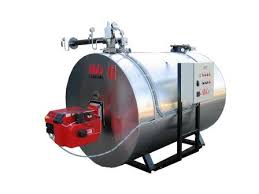
Nov . 18, 2024 05:58 Back to list
Safety Measures for High Pressure Steam Systems and Their Operational Guidelines
High Pressure Steam Safety Essential Practices for Industry
High-pressure steam is a vital component in many industrial processes, ranging from power generation to sterilization in healthcare. However, the use of high-pressure steam comes with inherent risks, making safety a paramount concern. Understanding the dangers and implementing effective safety measures can mitigate risks and ensure the protection of personnel, equipment, and the environment.
High Pressure Steam Safety Essential Practices for Industry
To prevent such incidents, it is crucial to prioritize regular maintenance and inspection of steam systems. Scheduled inspections should include checking for corrosion, wear and tear, and proper functioning of safety valves and pressure sensors. Utilizing advanced technologies, such as non-destructive testing methods, can help identify potential weaknesses before they result in a failure. Additionally, steam systems should be designed to accommodate fluctuations in pressure and temperature, taking into account materials that can withstand high-stress conditions.
high pressure steam safety

Training employees is another essential aspect of high-pressure steam safety. Workers who handle steam systems must be knowledgeable about the operational procedures and safety protocols. This includes understanding the risks associated with high-pressure steam, recognizing warning signs of potential failures, and knowing emergency response procedures. Implementing a comprehensive training program, along with refresher courses, can significantly reduce the likelihood of accidents caused by human error.
Proper personal protective equipment (PPE) is also vital when working with high-pressure steam systems. Employees should be equipped with insulated gloves, face shields, and specialized clothing to protect against burns. Safety footwear that provides adequate grip and protection against steam exposure is equally important. Employers must ensure that all safety gear is well-maintained and regularly inspected for any signs of damage.
Furthermore, implementing engineering controls can enhance safety in high-pressure steam operations. This can include installing pressure regulators to maintain appropriate operating pressures, using thermal insulation to reduce heat loss, and incorporating fail-safe mechanisms to automatically shut down systems in the event of a malfunction. By leveraging technology and engineering principles, businesses can create safer working environments.
In conclusion, safety in high-pressure steam systems is a multifaceted concern that encompasses maintenance, training, protective equipment, and engineering controls. By committing to a culture of safety that prioritizes vigilance and preparedness, organizations can minimize risks associated with high-pressure steam. This not only protects workers but also ensures operational efficiency and compliance with regulatory standards. As industries continue to rely on high-pressure steam for various processes, investing in safety measures is not merely a legal obligation but a moral imperative to safeguard human lives and preserve assets.
-
Efficient Biomass Fired Hot Water Boiler | AI Heating Solution
NewsAug.01,2025
-
High-Efficiency Gas Thermal Oil Boilers | HPT Models
NewsJul.31,2025
-
Oil Fired Hot Water Boilers Sale - High Efficiency & Affordable
NewsJul.31,2025
-
High-Efficiency Commercial Oil Fired Steam Boiler for Industry
NewsJul.30,2025
-
High-Efficiency Biomass Fired Thermal Oil Boiler Solutions
NewsJul.30,2025
-
High Efficiency Gas Fired Thermal Oil Boiler for Industrial Heating
NewsJul.29,2025
Related PRODUCTS






















